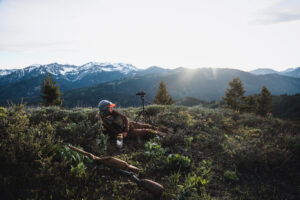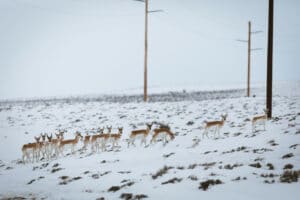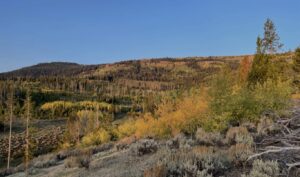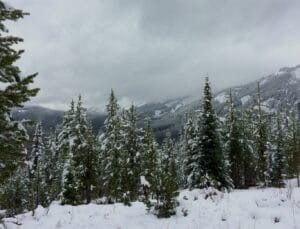The Bridger-Teton National Forest (BTNF) encompasses 3.4 million acres of public land and provides some of the nation’s best hunting, fishing, and wildlife viewing opportunities. As part of the Greater Yellowstone Ecosystem, it is some of the wildest and intact country in the lower 48 states. Our thousands of members use this area to harvest food for their families, wet a line after work, and create lasting memories with their families and friends- generation after generation. Ensuring responsible, modern management of the Bridger-Teton requires that the USFS complete an updated forest management plan that addresses current issues on the ground, reduces user conflicts, and conserves big game habitat including migrations like the Wyoming Range mule deer migration.
The current plan was completed in 1990. In the past 31 years the Bridger-Teton National Forest has seen significant changes including increased recreational use year-round and wildlife diseases. It’s WWF’s goal to have new scientific and social information, particularly related to wildlife habitat and migration corridors incorporated into an updated Forest Plan.
Specifically, WWF hopes to include language around the following topics for critical habitats within the Forest including migration corridors:
- The Plan encourages language that addresses concerns about mineral and energy development within critical habitats.
- The Plan will include setbacks and designations for sensitive stream corridors.
- The Plan will recognize existing designated migration corridors as critical habitats and provisional language to include future corridors as they are designated through the state process.
- The Plan will include provisions for historical trails and recreational access that includes keeping viewscapes undisturbed by development.
The team is now mapping high-priority areas within this massive landscape of the highest wildlife and recreational value to ensure recommendations during National Forest planning are what is best for future generations of our natural world and the people who enjoy it. This will continue to be a multi-year process with details emerging to engage local citizens and hunters to make a difference in this 20+ year public lands policy document.
KEY CONSERVATION CONCERNS
Wyoming Range Mule Deer Migration
Rather than a single path, the Wyoming Range mule deer migration corridor is a highly braided set of routes that deer use to pass between the Hoback Rim above Bondurant south to Kemmerer. The corridor crosses two mountain ranges, the Salt River Range and the Wyoming Range with the longest treks being over 130 miles long. Learn more about the Wyoming Range here >>
Bighorn Sheep Conservation
Recently, an amendment was brought to the Bridger-Teton National Forest Plan to restock old, intentionally bought-out sheep grazing allotments. WWF and our partners worked to buy out these allotments and compensate livestock producers to ensure a healthy bighorn herd can survive. Learn more about grazing allotments here >>
Increased Recreational Use
Motorized and non-motorized use of landscapes continues to grow in Wyoming. With that comes the potential for unintentional negative impacts to wildlife, and wild places. The Federation will be monitoring this issue closely in the Bridger-Teton National Forest Plan.
Invasive Species & Noxious Weeds
Invasive species and noxious weeds such as cheatgrass and ventenata, are starting to create a mono-culture on parts of the National Forest. This is a huge concern for quality native wildlife habitat and needs to be addressed in the BTNF Plan.
If you have comments, questions, or concerns in the Bridger-Teton and want to get involved, email Info@wyomingwildlife.org
Featured video: Stakeholders
This video highlights the diverse voices working to protect the Wyoming Range. Conservation takes everyone—across all interests and political perspectives—to safeguard these wild places for future generations.
Latest Related News
Wyoming State Land Parcel 194: Why is it so Important?
Wyoming State Land Parcel 194: Why is it so important for wildlife?
Two Vets Hunt the Wyoming Range
In 2020, the Wyoming Wildlife Federation’s Sam Lockwood opened his annual hunting camp in the Wyoming Range for five U.S. military veterans. The goal of the hunting experience was to share the incredible wildlife and wild places of Western Wyoming with those who …
A Certified Elk Hunter
I had moved to Western Wyoming from northern California on April 14th, 2008 as an assistant engine captain on a wildland fire engine with a federal land management agency. Living in California hadn’t offered many opportunities to hunt or fish for a few …
Help Protect Our Way of Life
We need everyone who values the wild spaces of Wyoming to get involved. Are you ready?





